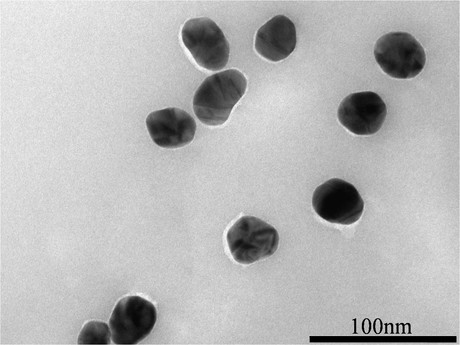The golden touch: light-activated nanoparticles to treat macular degeneration

For sufferers of age-related macular degeneration (AMD), the only way to prevent severe vision loss is to endure regular injections into the back of the eye. Now, Australian and Chinese researchers have developed a potentially less invasive drug delivery system for patients with the condition — and gold is a key ingredient.
Writing in the journal Angewandte Chemie, the scientists noted that biomacromolecular therapeutics have a short half-life in vivo. As explained by CSIRO researcher Johan Basuki, a co-author on the study, “Many effective biomacromolecule therapeutics are currently available to patients with AMD, but due to their susceptibility to biodegradation they are required to be administered via an ongoing monthly injection into the eye.”
The researchers believe there is a need for a drug delivery system that acts as a reservoir and releases the drug remotely and on demand. That is exactly what they have created, describing a hydrogel infused with polymer-coated gold nanoparticles (AuNPs) that, when exposed to light, releases preloaded therapeutics.
“Our system can control the release of drugs through exposure to light, which means a higher concentration can be injected, with the drug release activated monthly using light,” said Basuki.
The CSIRO researchers focused on gold nanoparticles as they absorb light at specific wavelengths then release it as heat, enabling the polymer matrix to soften and increasing the diffusion of drugs. When the light is turned off, the polymer cools down and hardens, stopping the release of the drugs.
“Importantly, the drug doesn’t need to be modified in any way and it retains very high biological activity after release,” said Basuki.
The system is highly versatile and can deliver different types of drugs, ranging from small molecules to proteins and antibodies. The nanoparticles can also be customised to different light wavelengths — infrared light, for instance, could release drugs used in deep tissue, solid tumour therapy.
CSIRO Manufacturing is now seeking investment partners to help take its research to the next stage.
ADHD may be linked with an increased risk of dementia
An adult brain affected by attention deficit hyperactivity disorder (ADHD) presents modifications...
Placebos appear to reduce PMS symptoms
Women affected by premenstrual syndrome (PMS) appear to experience less intense and debilitating...
Medicinal cannabis linked to long-term health benefits
As scientists find a way to improve the effectiveness of CBD, a separate study shows that...




